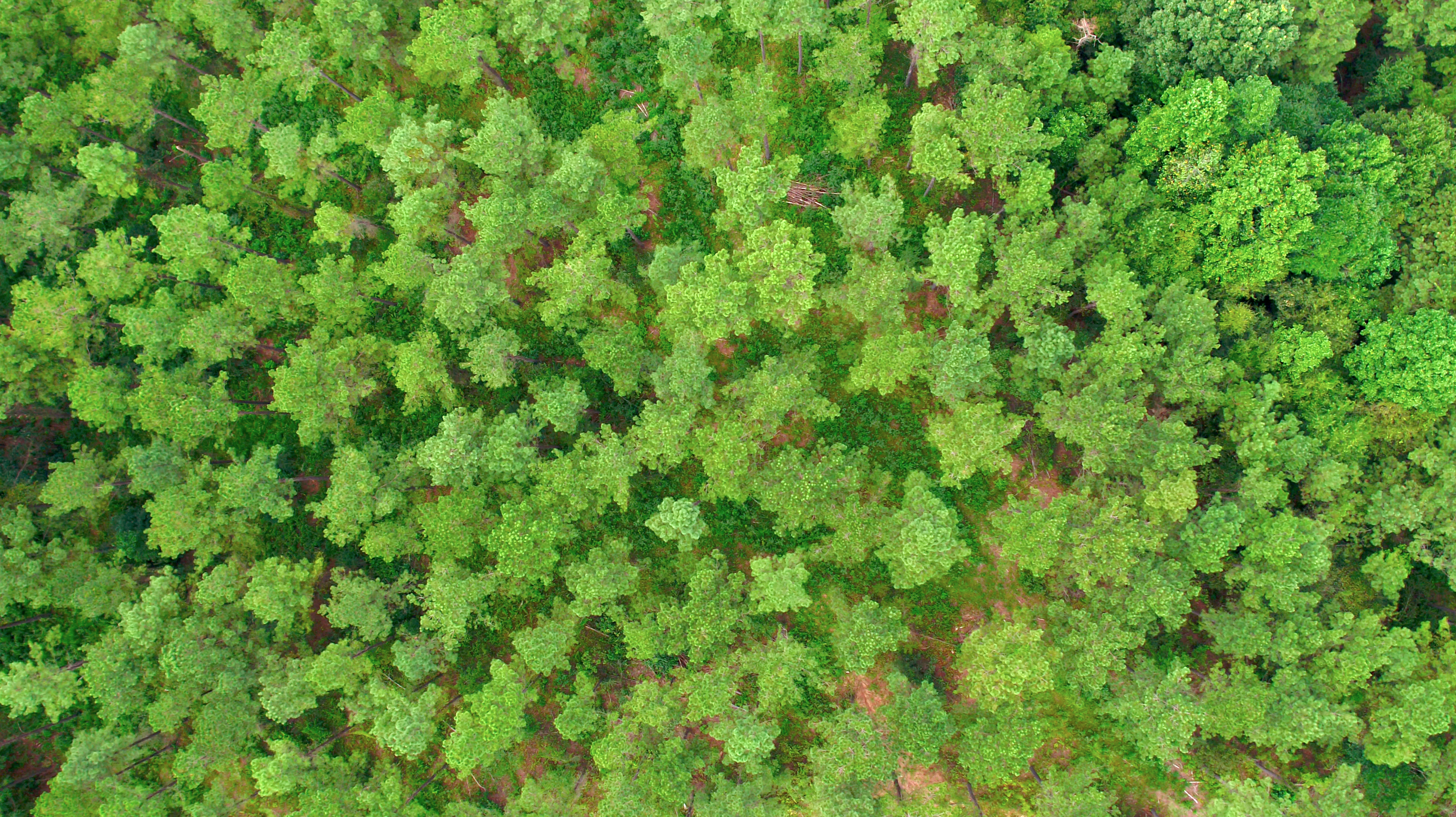
Responsible Sourcing



From arctic-circle, snow-laden pines to damp equatorial rainforests, to dry Australian scrublands, the planet is home to an incredibly diverse range of forested environments.
And while each region is very different, almost all have been impacted by humans. The effects of this have not always been positive, and despite decades spent raising awareness of the importance of forests for the health of the world, some regions’ forests remain in decline. Africa and Asia in particular have seen a decline in forest cover (although each year sees less lost) over the past few decades.
But there are areas where the impact of humans is in fact having a positive effect. This is largely thanks to the introduction of modern sustainable forestry practices, which have incentivised growth and helped bringing a variety of environmental and economic benefits to different regions around the world.
A recent report by Pöyry Management Consulting for Drax has looked in depth at these benefits and in particular, four regions where different approaches to sustainable forestry have brought a positive impact to people, industry and the environment alike.
More than a testament to the beneficial effects sustainable forest management can have, it shows that while the tactics, methods and environments may differ, their positive effects are universal.
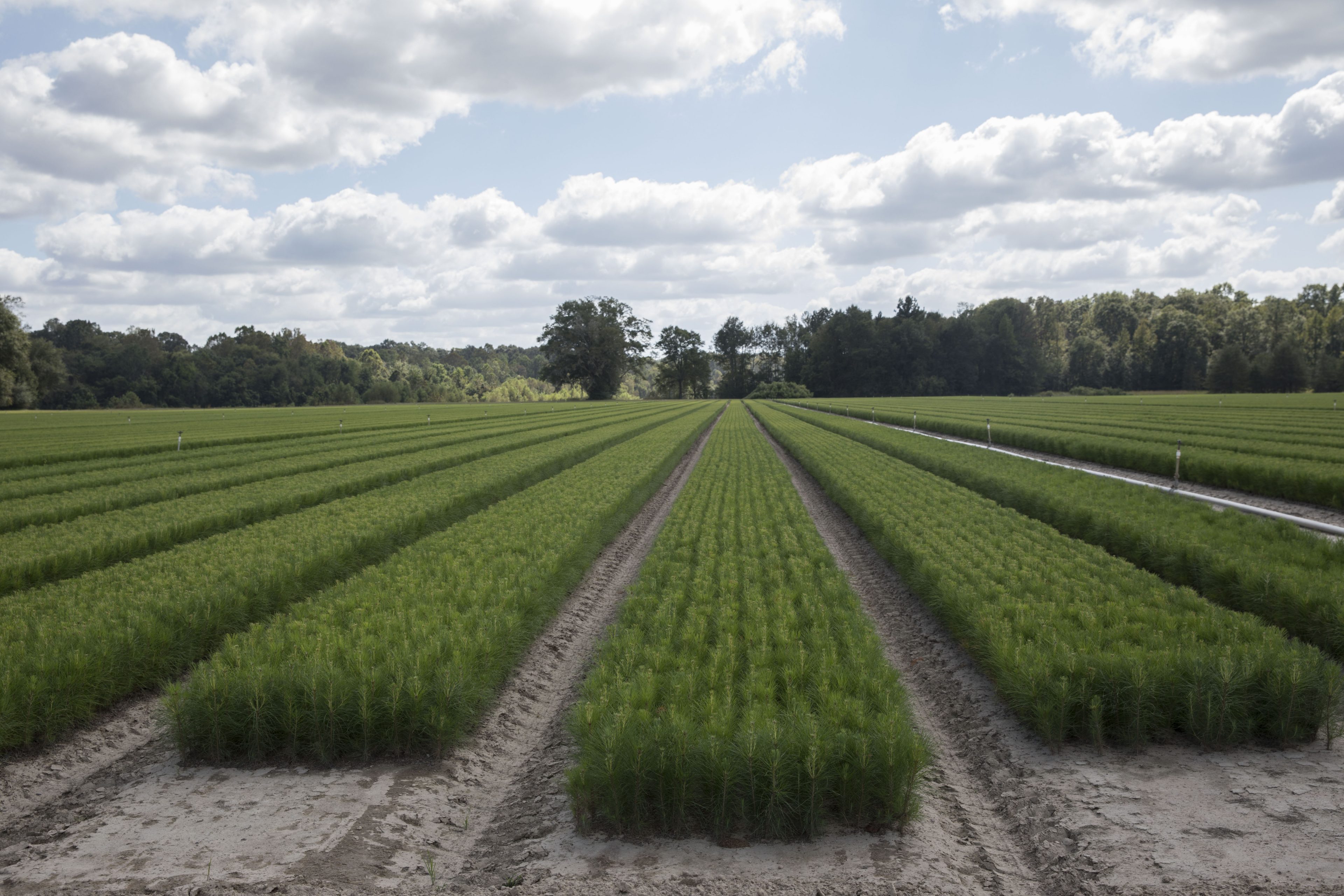
Weyerhaeuser Nursery, Camden, Alabama
The forests of the US South, from Virginia and Kentucky to Texas and Florida, have a long history of misuse. Both indigenous people and later European settlers used disruptive techniques such as large scale burning and removed valuable, mature hardwood on a mass scale, often leaving areas to naturally regenerate.
That largely changed in the mid-20th century, however, when forestry became more-intensive and the need for sustaining a supply of quality timber grew more apparent. The introduction of processes such as thinning and managed regeneration helped usher in a more responsible approach that has led to growth in both the forestry industry and forest coverage.
Between 2010 and 2015 there was 50% more growth in the volume of forests than was removed from harvesting. More than just growing forest area, this means an increase in the amount of carbon being absorbed and stored from the atmosphere.
Charts: US South historical increment to removal and US South above ground carbon 1957-1997.
In the US South, around 86% of forest land is privately owned by either corporations or individuals, but the economics of sustainable forestry practices has encouraged the overall growth in forests, even with limited regulations on land use in the area.
In addition to the native birds and mammals that depend on sustainably managed forests in the region, more than 200,000 people were employed by the industry in 2016, making it a vital part of local rural economies.

Asikkala, Finland by Taneli Lahtinen on Unsplash
Wood and wood products play an important role in Finnish culture, from its famous saunas to the world’s largest wooden church – multinational phone brand Nokia even started life in in 1865 as a wood pulp mill.
A high demand for wood as a commercial product meant that a few centuries ago Finland’s forests where in a state of heavy degradation. But starting as far back as 100 years ago sustainable practices such as planned harvesting and regeneration legislation were introduced. The results are significant: there is now more wood in Finnish forests today than at the turn of the century.
The majority (61%) of Finland’s forests are privately owned, with the state owning 25%, companies only owning 8%, and 5% held by other owners. Many large companies, however, offer services such as forestry work, wood sales, drainage and tax services to private owners. This collaboration between sectors allows for best practices to be easily shared and quickly become widespread.
As a result, forest stocks have increased from 1,500 million m3 in 1970 to 2,500 million m3 in 2015, even while overall forest area has remained largely the same. It highlights the effectiveness of legislation, guidelines and certification in regenerating forests.
Chart: Forest growing stock in Finland.
The UK was once thought to be 30% covered by forestland, but by the turn of the last century forests made up less than 5%. Today, however, this has grown to as much as 13%, owing largely to regulation and incentives.
Chart: Forest area in UK by country and type over previous 10 years.
As far back as the 1700s the UK had become dependent on wood imports from New England in the US and the Baltics in Europe. Following the First World War the Forestry Commission was established, primarily to try prevent timber shortages during times of war, but it went on to drive a boom in new plantations across the country and introduce grant schemes for private plantations.
Chart: Top 10 Net Importers of Wood Products. In 2017 the UK was the world’s second largest net importer of wood products.
A problem with this afforestation, however, was that it mostly consisted of monocultures of exotic species that were well suited to the climate, rather than regenerating native species. The modern UK Forestry Standard is countering this practice by putting in place requirements for afforestation and replanting that protect biodiversity, landscape and climate change, as well as soil and water.
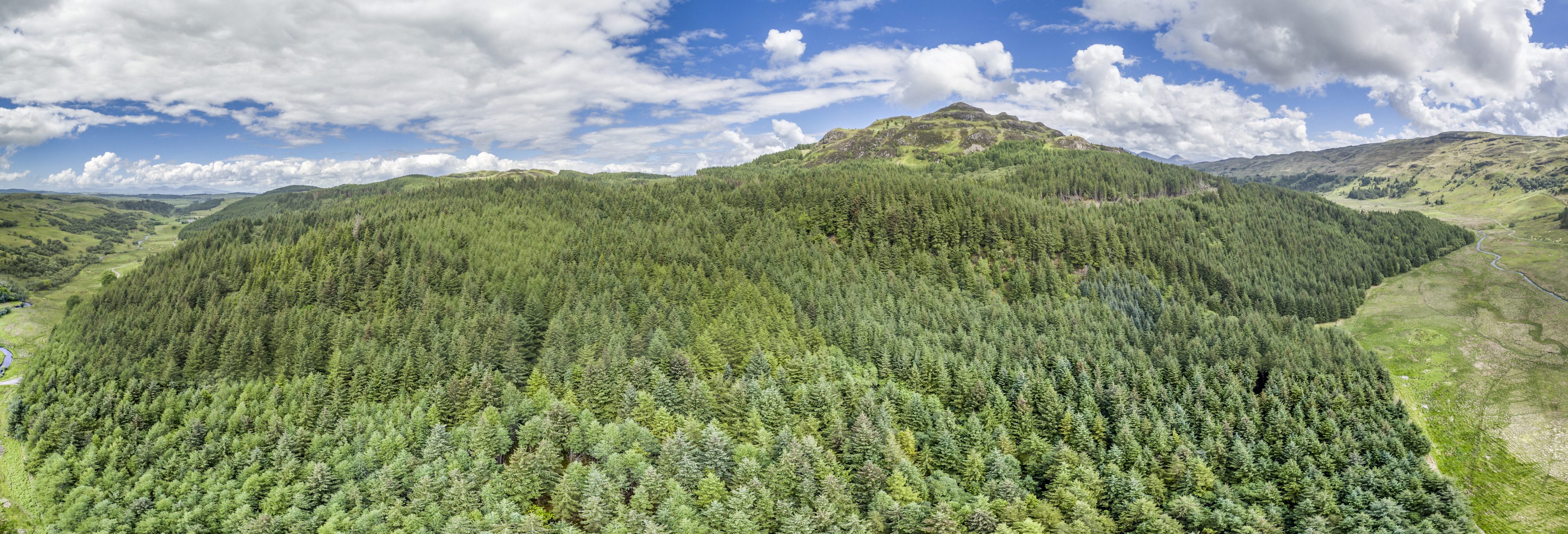
Forest in Argyll and Bute
Some 73% of the UK’s forests are privately owned, which includes historic estates and charitable trusts, as well as investment funds. Despite the increasing forest area in the UK over the past century, imports of both wood and wood products still make up almost 80% of the UK’s wood needs. The upside for the region is increased recreational and preserved historic forests.
Uruguay’s forestry industry is much younger than the likes of the US South or Finland, but offers an example of a how to rapidly expand the sector while preserving its ‘old growth’, or primary, forests.
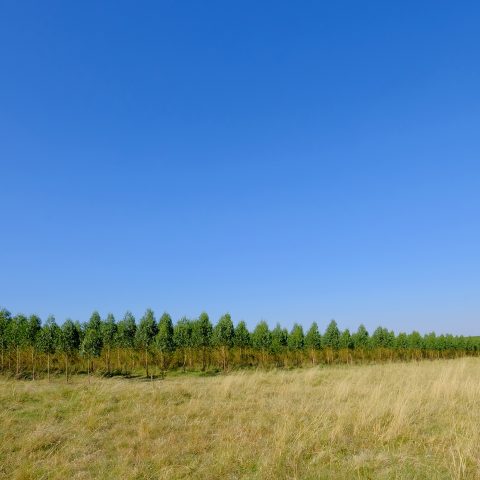
Eucalyptus trees in Uruguayan working forest
In 1975 the country introduced incentives such as tax waivers on forest operations and later subsidies for new plantations, as well as tax duties for timber exports. The result was a surge in eucalyptus plantations, which grew from 25,000 hectares in 1987 to more than 1 million hectares in 2015, largely driven by interest from international companies and investors. These plantations are currently managed sustainably, with growth still exceeding removals.
Eucalyptus is not a native species to Uruguay, but by allowing international investors to plant on land deemed of no agricultural or environmental value, the country has seen enormous afforestation while 800,000 hectares of native forests remain.
The economic impact is similarly impressive. Today forestry directly employees 15,000 people in Uruguay – 55% in forestry and logging and 45% in wood processing. The skills required to work in newly constructed mills has led to several courses in forestry and wood science at Uruguayan Universities.
Chart: Total forest area development in Uruguay
These four countries take different approaches to forestry but what they have in common is forest growth exceeding that removed through harvesting. It points to sustainable forest management as a means of growing forests and, in turn, carbon extracted and stored.

Think of the products that come from forests and you might think of the centuries of shipbuilding, construction and cooking made possible by civilisations utilising this plentiful natural resource.
What you might not think of is the complex construction of chemicals and matter that make up the trees of a forest – nor of the countless ways these can be broken down and used. Yet this is the reality of forests. From essential oils to sturdy packaging to powerful adhesives, trees are used to create a range of products that make daily life possible.
And as awareness of the need to reduce plastic consumption grows, research into forest products and how they can replace the less-environmentally friendly objects is growing.
Here we look at five of the most common products used today, and maybe in the future, that owe something to forests.
Anyone who has encountered tree sap can attest: trees are made up of some pretty sticky stuff. And it’s because of this that they have long been a source for adhesives production – from glue to cement.
The substance that makes this possible is known as tall oil. Named after the Swedish word Tallolja, meaning pine oil, it is a by-product of pulping coniferous trees.

Tall oil has been produced commercially since the 1930s when the invention of the recovery boiler made it possible to extract it from the Kraft pulping process. However, the resins and waxes tall oil is made up of have a longer history. These are also known as ‘Naval Products’ due to their historic use in ship building and can be tapped directly from living trees.
Today, tall oil is also used in asphalt roofing, as well as medical and cosmetic applications. One of tall oil’s most exciting uses is as BioVerno – a renewable alternative to diesel made in the world’s first commercial-scale biorefinery in Finland.
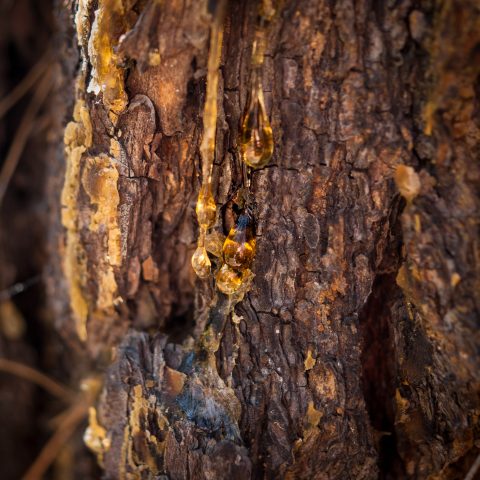
Tapping trees has historically been a means of extracting multiple useful substances and one of the most versatile of these is turpentine. This yellowish liquid is produced from distilled tree resin and has a long history of uses.
Turpentine has been used since Roman times as torch or lamp fuel, but its antiseptic properties also means it was often used as medicine. While doctors today would advise against drinking turpentine (as was prescribed in the past), it is still used today in disinfectants, detergents and cleaning products, giving off a fresh, pine-like odour.
Biomass pellets from working forests are just one of the ways trees are providing renewable energy. One other form is cellulosic ethanol, a new, second generation of liquid biofuel. Rather than competing with food supply (often a concern in the creation of biodiesels), cellulosic ethanol is made from non-food based materials such as forest and agricultural residues left behind after harvest – wheat straw, – and timber processing wastes including sawdust. It is now being produced at a commercial scale in Europe, the US and Brazil.

Woody biomass can also be converted into a petroleum substitute known as pyrolysis oil or bio-oil. Biomass is transformed into this dark brown liquid by heating it to 500oC in an oxygen-deprived environment and then allowing it to cool. Bio-oil has a much higher energy density than biomass in chip or pellet form and after upgrading can be used as jet fuel or as a petroleum alternative in chemical manufacturing.
Lignin is what gives trees their tough, woody quality, and after cellulose is the world’s second most abundant natural polymer. Polymers are very long molecules made up of many smaller molecules joined end-to-end most often associated with plastic, (which is a synthetic polymer).

Lignin is generally a waste product from the paper pulping process and is often burnt as fuel. However, it can also serve as a vanilla flavouring – a property that may make lignin an important resource in the face of an impending vanilla pod shortage.
Future-looking research, however, aims to unlock much more from the 50 million tonnes of lignin produced every year globally. One of the most promising of these is as an alternative source of a family of organic compound known as phenylpropanoids. These are normally extracted from petroleum and are hugely useful in producing plastics and carbon fibre, as well as drugs and paint.
Cellulose is already one of the most important products to come from forests thanks to its role in paper production. However, this abundant substance – which is also the primary material in the cell walls of all green plants – holds even more potential.
By shrinking cellulose down to a nano level it can be configured to be very strong while remaining very light. This opens it up as a product with many possibilities, including using it as a source of bioplastics. Some bioplastics – polylactic acid, PHA, PBS and starch blends – are biodegradable alternatives to fossil fuel-based plastics and could potentially help solve some of the world’s most-pressing waste issues.
Not all bio-based plastics are biodegradable, however. The property of biodegradation doesn’t depend on the resource basis of a material – it is linked to its chemical structure. In other words, 100% bio-based plastics may be non-biodegradable, and 100% fossil-based plastics can biodegrade.

Bio-based plastics that are not biodegradable include polyethylene terephthalate, polyurethanes, polyamide, polyethylene. Polyethylenefuranoate or PEF is recyclable, can be manufactured without fossil fuels and while not biodegradable, has the potential to become a more sustainable alternative to the oil-based plastic used to make water bottles.
Cellulose’s combination of strength and light weight has also attracted interest from the auto industry in the ability to help cars become much lighter and therefore more fuel efficient. Its flexible, strong, transparent nature can also make Nanocellulose – an important material in helping bring bendable screens, batteries, cosmetics, paper, pharmaceuticals, optical sensors and devices to market.

The idea of using trees as a source of goods and products in everyday life might sound archaic, but, in reality, we’ve only just tapped the surface of what the chemicals and materials they’re made of can do. Markus Mannström from Finnish renewables company Stora Enso said recently that: “We believe that everything made from fossil-based materials today, can be made from a tree tomorrow.” As research advances, trees and forests will only play a bigger role in a more sustainable future.

Around the world industries are undergoing profound change. The phrase ‘Industry 4.0’ describes this emerging era when the combination of data and automation is transforming long-established practices and business models.
Autonomous cars are perhaps one of most widely-known examples of ‘smart’ technology slowly inching towards daily life, but they are far from the only example. There is almost no sector untouched by this oncoming digital disruption – even industries as old as forestry are being transformed.
From smart and self-driving vehicles to data-crunching drones, Forestry 4.0 is ushering in a new era for efficient and sustainable forest management.

If the first industrial revolution was powered by steam, the fourth is being powered by data. Collecting information on every aspect of a process allows smart devices and machines to cut out inefficiencies and optimise a task.
In forestry, capturing and utilising huge amounts of data can build a better understanding of the land and trees that make up forests. One of the best ways to gather this data from wide, complex landscapes is through aerial imaging.
Satellites have long been used to monitor the changing nature of the world’s terrain and in 2021, the European Space Agency plans to use radar in orbit to weigh and monitor the weight of earth’s forests. But with the rise of drones, aerial imagining technology is becoming more widely accessible. Now even small-scale farmers and foresters can take a birds-eye view of their land.
Oxford-based company BioCarbon Engineering focuses on replanting areas of forests. It utilises drone technology to scan environments and identify features such as obstacles and terrain types which it uses to design and optimise planting patterns.
A drone then follows this path roughly three to six feet off the ground, shooting biodegradable seed pods into the ground every six seconds along the way. BioCarbon claims this approach can allow it to plant as many as 100,000 trees in a single day.
Gathering data on the health of working forests doesn’t necessarily require cutting-edge equipment either. In the smartphone era, any forestry professional now has the computing power in their pocket to capture detailed information about a forest’s condition.

Mobile app MOTI was designed by researchers at the School of Agricultural, Forest and Food Sciences at the Bern University of Applied Sciences in Switzerland. It allows users to scan an area of forest with a phone’s camera and receive calculated-estimates on variables such as trees per hectare, tree heights and the basal area (land occupied by tree trunks).
Capturing data from forests can play a huge part in developing a better understanding of the land, terrain and trees of working forests, which leads to better decision making for healthier forests, including how and when to harvest and thin. But the equipment and technology carrying out these tasks on the ground are also undergoing smart-tech transformations.

Self-driving and electric vehicles are expected to disrupt multiple industries, including forestry. Swedish startup Einride, recently unveiled a driverless, fully electric truck that can haul as much as 16-tonnes of lumber and is specially designed for off-road, often unmapped, terrain.
There are some pieces of equipment, however, that will be harder to fully automate – for example, harvesters, which are used to fell and remove trees. Their long, digger-like arm normally features a head consisting of a chainsaw, claw-grips and rollers all in one, which are controlled from the vehicle’s cab.
Even as image recognition and sensors improve, automating these types of machines entirely is hugely challenging. An ideal use of artificial intelligence (AI) would be enabling a harvester to identify trees of a particular age or species to remove as part of thinning, for example, without disturbing the rest of the forest. However, trees of the same species and age can differ from each other depending on factors such as regional climates, soil and even lighting at the time of analysis.
This makes programming a machine to harvest a specific species and age of tree is very difficult. Nevertheless, innovation such as intelligent boom control – as John Deere is exploring – can help human operators automate movements and make harvesting safer and more efficient.
Forestry has always changed as technology has advanced – from the invention of the axe to the incorporation of ecology – and the digital revolution is no different. Smart sensors and deeper data will, ultimately, help optimise the lifecycle, biodiversity and health of managed forests.
With thanks to the Institute of Chartered Foresters for inviting us to attend its 2018 National Conference in May – Innovation for Change: New drivers for tomorrow’s forestry.
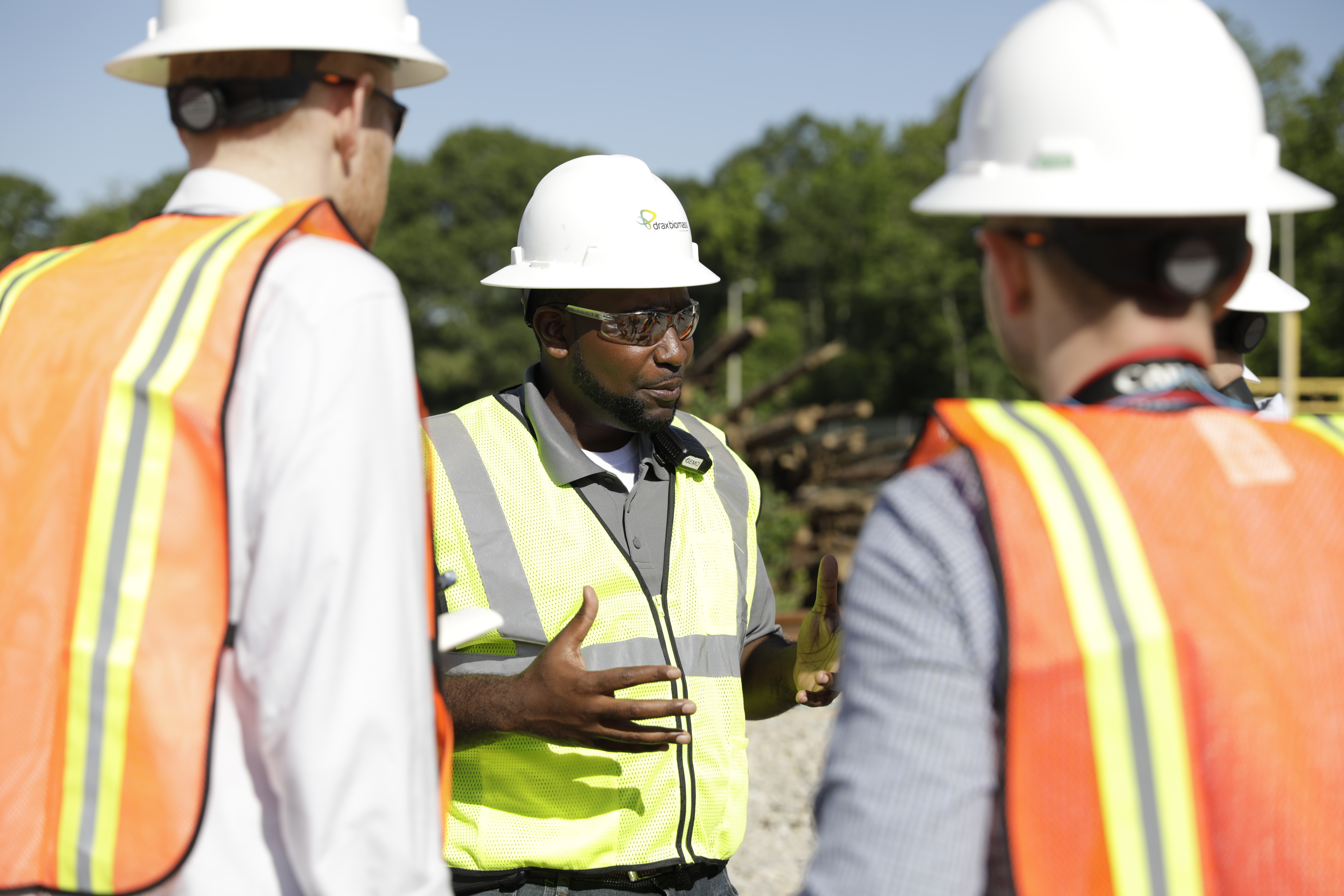
One of the most interesting outcomes of the recent analysis from the UK’s Forest Research (FR) agency on the Carbon Impact of Biomass (CIB) is the call for regulation to ensure better forest management and appropriate utilisation of materials.
The research was commissioned by the European Climate Foundation (ECF) to follow up FR’s mighty tome from 2015 of the same name.
This new piece of work essentially aims to clarify the findings of the initial research with supplementary analysis to address 3 key areas:
Not surprisingly, the report finds that unconstrained and unregulated use of biomass could lead to poor GHG emission results, even net emissions rather than removals. This, again, is a no-brainer. No reasonably minded person, even the most ardent bio-energy advocate, would suggest that biomass use should be unconstrained and unregulated.
There are plenty of obvious scenarios where biomass use would be bad, but that doesn’t mean that ANY use of biomass is bad. Thankfully this analysis takes a balanced view and identifies a number of scenarios where the use of biomass delivers substantial GHG emission reductions.
The report identifies the use of forest and industrial residues and small/early thinnings as delivering a significant decrease in GHG emissions, this is characterised as “good biomass” — around 75% of Drax’s 2017 feedstock falls into these feedstock categories (including some waste materials).

The remainder of Drax’s 2017 feedstock was made up of low grade roundwood produced as a bi-product of harvesting for saw-timber production. This feedstock was not specifically modelled in the analysis, but the report concludes that biomass users should: Strongly favour the supply of forest bioenergy as a by-product of wood harvesting for the supply of long-lived material wood products. The low grade roundwood used by Drax falls into this category.
Among the more obvious suggested requirements are that biomass should not cause deforestation and that biomass associated with ‘appropriate’ afforestation should be favoured. Agreed.
Another interesting recommendation is that biomass should be associated with supply regions where the forest growing stock is being preserved or increased, improving growth rates and productivity. Drax absolutely supports this view and we have talked for some time about the importance of healthy market demand to generate investment in forest management, encourage thinning and tree improvement.
Timber markets in the US South have lead to a doubling of the forest inventory over the last 70 years. These markets also provide jobs and help communities and ensure that forests stay as forest rather than being converted to other land uses.
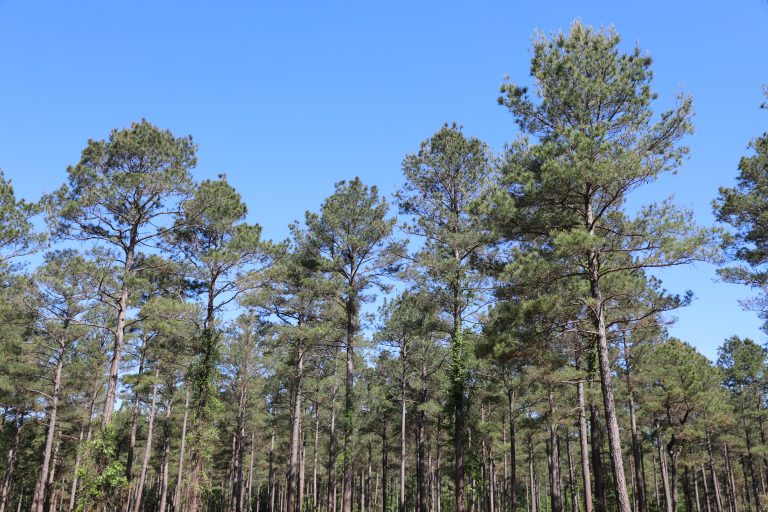
The importance of thinning, as a silvicultural tool to improve the quality of the final crop and increase saw-timber production, is recognised by Forest Research. This is an import step in accepting that some biomass in the form of small whole trees can be very beneficial for the forest and carbon stock but also in displacing fossil fuel emissions.
The forest resource of the US South is massive, it stretches for more than a thousand miles from the coast of the Carolinas to the edge of West Texas, a forest area of 83 million ha (that’s more than 3 times the size of the UK). Given that a wood processing mill typically has a catchment area of around a 40–50-mile radius, imagine the number of markets required for low grade material to service that entire forest resource!
So, what happens when there isn’t a market near your forest, or the markets close? Over the last 20 years more than 30 million tonnes of annual demand for low grade timber — thinnings and pulpwood — has been lost from the market in the US South as the paper and board mills struggled after the recession. What happens to the forest owner? They stop harvesting, stop thinning, stop managing their forest. And that reduces the rate of growth, reduces carbon sequestration and reduces the quantity of saw-timber that can be produced in the future. Recognising that biomass has provided essential markets for forest owners of the US South, and directly contributed to better forest management is a really important step.
The CIB report talks about different types of biomass feedstock like stumps, which Drax does not use. Conversely the report also identifies good sources of biomass which should be used such as post-consumer waste, which Drax agrees would be better utilised for energy where possible, rather than land fill. It also shows that industrial processing residues that would otherwise be wasted and forest residues that would be burnt on site or left to rot would deliver carbon savings when used by facilities like Drax.
All of these criteria are similar to those outlined in the 7 principles of sustainable biomass that Drax has suggested should be followed.
Among the other recommendations which echo Drax’s thinking are that biomass should not use saw-timber or displace material wood markets, the scale should be appropriate to the long term sustainable yield potential of the forest — it should be noted that harvesting levels in the US South are currently only at around 57% of the total annual growth.
Counterfactual modelling, like that used in this report, cannot take account of all real-world variables and must be based on generic assumptions so should not be used in isolation, but this report makes a very useful contribution to a complex debate.
It is possible to broadly define good and bad biomass and to look at fibre baskets like the US south and see a substantial surplus of sustainable wood fibre being harvested a rate far below the sustainable yield potential.
Drax is currently working with the authors of this report, and others in the academic world, to develop the thinking on forest carbon issues and to ensure that all biomass use is sustainable and achieves genuine GHG emission reductions.